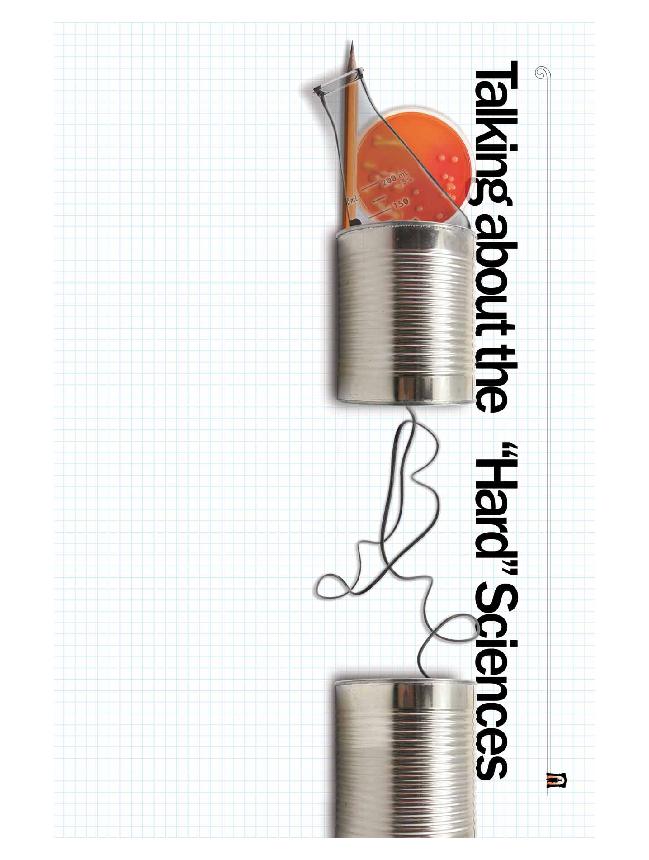
she tells someone she is a scientist, her
acquaintance will look uneasy and politely
begin edging away. If she goes further,
mentioning that she is a chemist, the reaction
is still more dramatic.
professor of chemistry. "The next thing
we hear is a sigh and, almost always, the
person we've met will say, `Oh, that was my
worst class.'"
science education in the past. But some areas
of science don't terrify them -- medicine,
for example -- so what is it about the "hard"
sciences that creates so much anxiety?
often, "we are communicationally challenged,"
she says, "failing to explain our work in terms
that non-scientists can understand. We may
rely on highly technical jargon -- in my case,
such terms as semi-conductors and nuclear
magnetic resonance -- that are opaque to
anyone not in my field."
colleagues might be able to rely on one
another for more help across departmental
boundaries. And in the outside world, lay
people with a greater understanding of
scientific concepts would be better citizens.
whom are not scientists," she says. "Science
funding from such agencies as the National
Institutes of Health or the National Science
Foundation is also determined by the public,
decides whether it goes up or down."
educational beacons for information
about scientific research, engineering
and medicine. In general, they should do
more educational outreach in their
communities; they might consider serving
as community resources to local business
scientific advice.
For example, the university sponsors
the active, successful Science Outreach
program, which brings university
resources to K-12 classrooms in St. Louis.
During the 2008-09 school year, these
resources reached some 2,100 teachers
and 25,700 students.
each other. In April 2009, Hayes and John
McCarthy, professor of mathematics, held
a one-day symposium, Frontiers in Science
and Technology, aimed at helping young
Washington University faculty better
understand each other's work. Participants
had to explain their research at the level of
any faculty member trained in at least one
science, technology, engineering and math
be resolved if I knew the right person on
campus," says Hayes. "I may need help
soldering a special piece of equipment
together or solving a differential equation.
It's great to meet fellow scientists whom I
can call upon for help."
a great deal of enthusiasm and a network of
the university -- evidence, says Hayes,
of the demand for building these cross-
disciplinary ties.
members, she says, is the International
Center for Advanced Renewable Energy
in June 2007 and directed by Himadri
B. Pakrasi, Ph.D., the George William
and Irene Koechig Freiberg Professor of
Biology in Arts & Sciences. By fostering
research on energy, environmental
concerns and sustainability, I-CARES
hopes to contribute to rapid progress in
meeting the world's energy needs. But
this progress will only come if investigators
from different fields work together.
in which basic science has led to huge leaps
in technological advancement," says Hayes.
"Think of your cell phone, the fuel-efficient
car you drive or the Internet you use daily."
physicians who have managed to convey
complex medical concepts to the public
and have become compelling advocates for
from the media, which has popularized
science in such shows as CSI or Wild
Kingdom. In the past, scientist Carl Sagan
successfully translated high-level ideas in
physics to a popular audience.
important thing," she says. "Couldn't
we take our excitement about science and
transfer that excitement to others who
don't choose to go into our disciplines?"